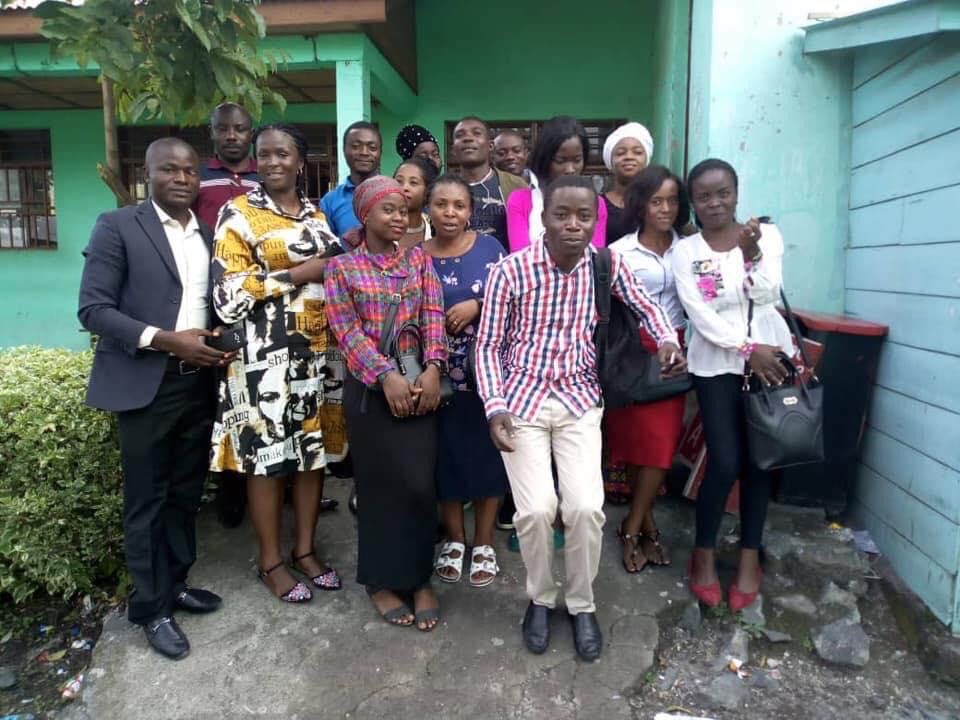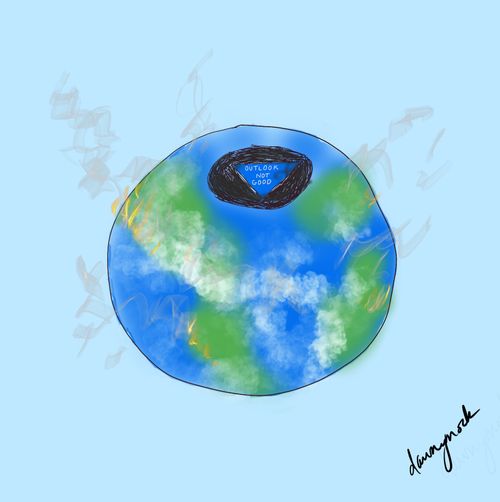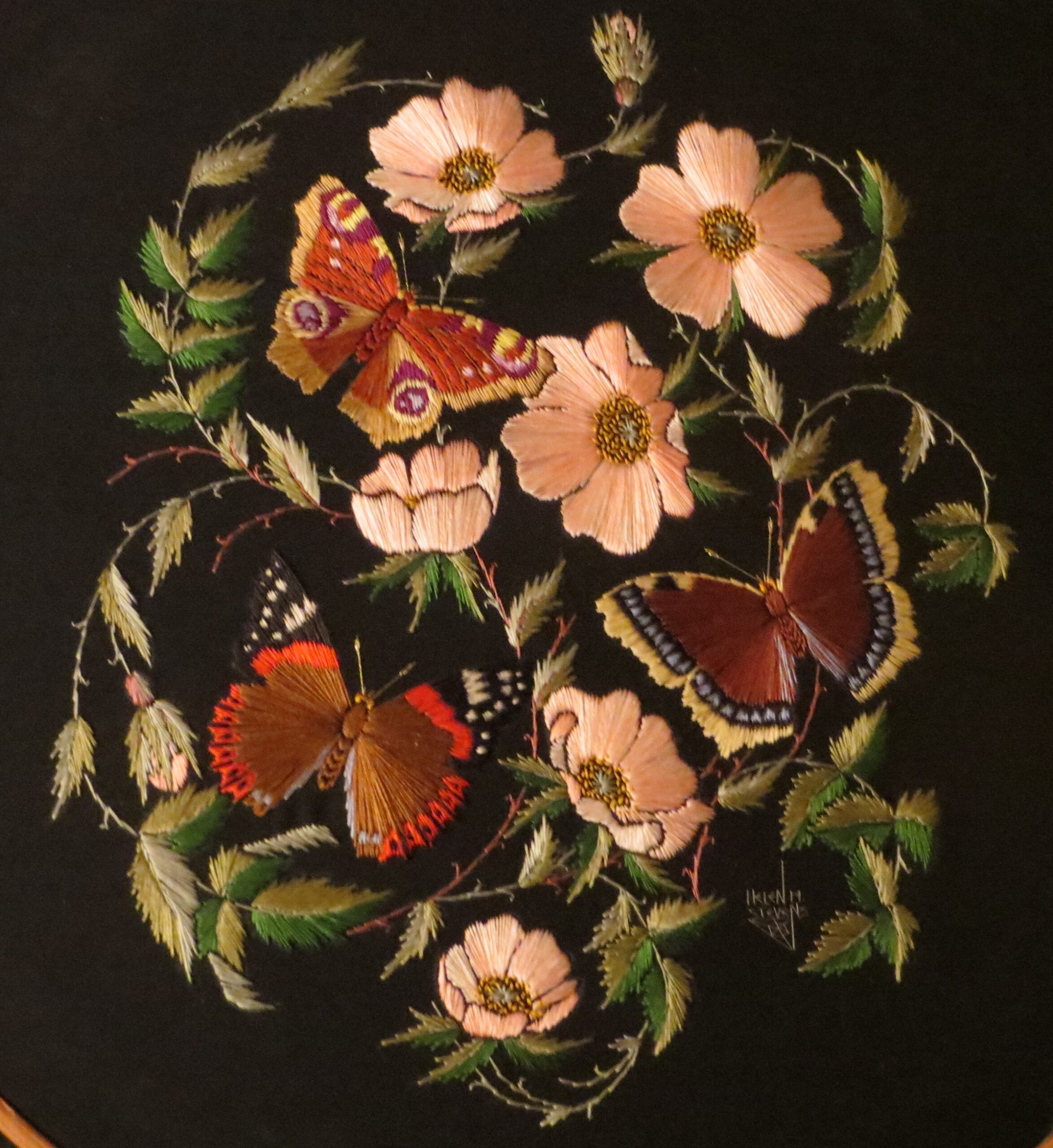
SELF-HELP AND RESILIENCE IN THE DEMOCRATIC REPUBLIC OF CONGO
I interviewed Bertin Kalimbiro from the Democratic Republic of Congo about his work in the Goma region to grow food safely and help people threatened

I interviewed Anna Czarska, Managing Director and Producer at Sticky Tape Productions, an Irish film company who make socially-engaged films, ranging from character-driven realism to fantasy, sci-fi and mythology. In Part One of their interview, Anna talks about Uisce, their Irish-language children’s film, and Mildly Different, an immersive film about being autistic.
Leslie: How did you first come up with the name ‘Sticky Tape Productions? Why did you choose it and what’s its significance?
Anna: That’s a bit of a long story actually. There were a few things that led to that name landing. Firstly, I am a big fan of Robert Rodriguez and his creative, outside-the-box solutions to problems he encountered on set in his early career (before the millions were trickling in). When I was first forming Sticky Tape Productions, I was reading about how he shot El Mariachi. As the film had a very small budget, he had to be very clever in coming up with ways to shot the scenes. For instance, to get a steady, moving shot, he had someone wheel him around in a wheelchair while he filmed the scene. At the time, I had secured myself a flexible, part-time gig at another company while I worked on my own career. I was having a think about everything I had read about Robert Rodriguez’s creative problem-solving while sticking stickers on buckets for my employer and… it sort of just came to me, “Why spend a fortune on something when you can just fix it with Sticky Tape?”. A light went off and I thought Sticky Tape Productions – using creative solutions to tackle production. We’re known for being able to accomplish a lot for very little. It is how Robert built his career and it is a strong motivation for our company. Don’t just throw money at it, find a new way to look at the obstacle and you’ll figure out a practical solution. So… Sticky Tape Productions. I also liked the idea of a film reel being so good it sticks. 😉
Leslie: Tell us about film making in Ireland. What’s particularly creative about working in The Republic?
Anna: The Irish film industry is massively underrated. We have a large talent pool here of people that are trained in the latest techniques as, luckily, the film industry in Ireland is supported by the Irish Government. We have organizations such as Screen Ireland, National Film Academy, Screen Skills Ireland, Arts Council… and guilds like Screen Producers Ireland, Director’s Guild, Writer’s Guild, etc. All of these organizations run training and networking events throughout the year and help the Irish film industry members to skillup. There are also grants and opportunities for learning from high-end filmmakers – and these are funded by the government. It allows us to access things that those in the US film industry wouldn’t be able to, or at least those starting out wouldn’t be able to afford. We have a very tight network here, where everyone kind of knows everyone or at least knows someone that knows someone. It is easier to make connections here because we all help each other and support each other here. In the states, its dog-eat-dog. No one wants to help you, they just want to get ahead themselves and they won’t lend a hand or share information because they are too concerned about looking better than you. Ireland is different. If it wasn’t for Ireland, I wouldn’t have a career, and that’s the truth. On a side note, it is an attractive place to shoot for those coming from abroad as not only do we have interesting landscapes, old buildings, etc. but it is far less expensive to shoot in Ireland than in the US for instance. Ireland has a lot to offer, come see for yourselves

Leslie: What have been the special challenges and rewards so far of making the Irish-language film Uisce (currently in development)?
Anna: Uisce is a very special film involving Irish mythology and folklore. It’s a beautiful story of a young girl who learns how brave she really is when she must save her mother’s life. I wanted to create a film for all audiences, a family film, that not only brings out some of the more well-known Irish stories, but also shines a light on characters and tales that haven’t been represented. Rather than keeping them exactly as is, our film puts a spin on them and allows our lead character Brónach, played by the talented Ruby Connolly, to interact with the characters and impact the storylines. I also wanted to bring Irish language into the mainstream as it is such a beautiful language and largely unheard of. When we hear French or Spanish spoken in a film, we recognise it, even if we cannot understand it, but Irish doesn’t even make it to the screen! I want help facilitate that when someone hears it spoken, they can say “That’s Irish!”.
The particular challenges here would be first and foremost to get the necessary funding for production. We are currently looking for financers or co-production opportunities for the film who can invest in production to get this film made. Outside of that, filming with children brings its own challenges as you have to pay extra attention to schedules and shoot times, considering children can only be on set for a certain number of hours per day/week, and there are all sorts of other regulations to keep an eye out for. Lighting in the forest is another concern, but we have a very skilled cinematographer, Jaro Waldeck, on board who has training in these conditions so we feel confident in overcoming these particular challenges. As there are quite a few characters in the film, elaborate costumes and SFX makeup will be necessary to portray the characters properly. One of our characters is a shapeshifter, so we will need to be careful with continuity as well as rehearsing the actors playing this character to be unified as one person – which will be a particular challenge for myself as a director. Post-production effects and sound design, composing, etc. will play a large part in shaping the understanding of the scenes, more so than any film I have made previously. However, despite all of these, and many more, challenges, I feel that the film is going to be well-received and well-loved by both the Irish audience and around the world. It’s a story that you don’t have to be Irish to enjoy, with influences of hit films “Pan’s Labyrinth”, “Legend”, and “Return to Oz”, though more fine-tuned for younger audiences. A fantasy adventure for the whole family to enjoy!

Leslie: How are you, as an Autistic person, ‘Mildly Different’? Tell us about how your film of that title began, grew and developed.
Anna: The title “Mildly Different” actually isn’t referring to “Mild Autism”, but to being too different to fit in, yet looking just like everyone else and therefore being expected to be just like everyone else. You can’t be though. You’re not different enough to stand out, and too different to fit in… so you’re Mildly Different.
The film started as a response to my late-diagnosis of autism. I spent my entire life feeling like an alien and not understanding why. I was very hard on myself, blaming myself and having very low self-esteem most of my life. I just thought there was something wrong with me, that I was broken. Throughout my childhood, I had seen numerous psychologists and counsellors, yet not one of them had thought to assess me for autism despite all of the signs being there. When I finally found out that I was autistic, there was a whirlwind of emotions that came up, both good and bad, and I realised that had I known as a child, I could’ve spared myself a lifetime of grief! I wouldn’t have felt alone and could’ve found friends who were also neurodivergent. I wouldn’t have compared myself to everyone around me, I would’ve known that I was on a completely different track. I would’ve focused on my strengths instead of my weaknesses. And I likely would’ve had more positive relationships and been further along in my career.
I was angry that all of the psychologists had failed me. I was angry that the only portrayals we have of autistic people in the media are those akin to “Rain Man”. That is why autism is so misunderstood. That is why so many of us are undiagnosed/misdiagnosed. The misconception of what autism is, what autistic people are like, is a major problem that needed to be addressed. I wanted to make Mildly Different for other autistic people like me so that they feel seen. I wanted them to be able to show their family, “Look! This is what it is like for me!”, even when they cannot explain it themselves. I wanted those who know nothing about autism to have a more authentic example to draw from. I hope I have accomplished that.
Leslie: What scenes in ‘Mildly Different’ did you draw from your own life and the experience of your lead actor Jordanne Jones? How did you make an audience understand the subjective experience of Autism without actually telling them? What aspects of the Autistic experience (if any) did you decide to leave out of the film?
Anna: The Mildly Different script was written using real-life experiences taken from myself and those in the autistic community who have shared experiencing similar things over and over again in their lives. Many of these scenes were just slightly tailored versions of things that actually happened in real-life. Those strange looks that neurotypical individuals give you when you say something they weren’t expecting, something awkward… they are so raw and intense for us to experience, that most of us just hide away from society because we would rather be alone than keep going through that day in and day out. That said, we strongly want to make connections and bond with other people. It is just very difficult when it feels like we are not the same species.
When I was writing the film, I wanted the audience to discover the autism along with the main character, Christina. Especially because I wanted them to have something to relate to before realising, but also because I felt it was important for the audience to really feel what it was like instead of to think what it was like, if that makes sense. We used visual effects to convey her synaesthesia, as well as her sensory overload when she is stressed or anxious. We used sound effects so people can understand what it is for some of us to experience heightened sensory perception (lights make a sound!). And I wanted to show the stark difference having one accepting friend can make in our lives, considering society tends to believe autistic people don’t want to connect with others, something that is entirely untrue. The only thing I purposefully decided to leave out of the film was the harmful treatment autistic people often received when there was less research out about how to manage stress, such as physically restraining autistic people etc. It isn’t something I condone and its very harmful to autistic people, I felt it would be best to just leave that out.
I was very lucky with casting two wonderful actresses to play Christina. Jordanne Jones is an advocate for autism and is herself autistic. She really understood what the character was going through because she had similar experiences. I remember her asking me, “Can I stim in the scenes? Does the character stim this way? This is how I do it normally.” and I remember thinking that I had forgotten to even mention this but absolutely expected stimming to be in the film. It was great to have such a talented actress play the part and be able to bring her own personal touches into the roll that were so important for an authentic portrayal. I wouldn’t even consider casting a non-autistic actress for that. I have to also mention how lucky we got that Ruby Connolly came to audition for the part of Young Christina. I was blown away at how someone that young can go completely into character and project such intense, natural emotions. And she had to do this while given short periods to prepare and with a huge amount of pressure put upon her due to the budget constraints and time we had allotted to shoot the scenes. I have been in awe of her ability and level of maturity since first we met and I continue to be. I know she’s going places.
Next week in Part Two of their interview, Anna talks about different film genres, storyboarding and being non-binary.
ABOUT LESLIE TATE’S BOOKS:

I interviewed Bertin Kalimbiro from the Democratic Republic of Congo about his work in the Goma region to grow food safely and help people threatened

I interviewed computer expert and sustainability campaigner Dr Erlijn van Genuchten, who writes easy-to-understand books based on science full of practical suggestions for planet-friendly living.

I interviewed Canadian cartoonist Dawn Mockler about how she works on cartoons that might be environmental or wordless but always witty – especially her famous

I inteviewed Helen M Stevens about how she has revived the art of embroidery, creating original contemporary patterns while studying and drawing on, “One of

I interviewed Councillor Rachel Smith-Lyte about the origins of her passion for nature and her environmental activism. Rachel tells the story of her teaching (and
| Cookie | Duration | Description |
|---|---|---|
| cookielawinfo-checkbox-analytics | 11 months | This cookie is set by GDPR Cookie Consent plugin. The cookie is used to store the user consent for the cookies in the category "Analytics". |
| cookielawinfo-checkbox-functional | 11 months | The cookie is set by GDPR cookie consent to record the user consent for the cookies in the category "Functional". |
| cookielawinfo-checkbox-necessary | 11 months | This cookie is set by GDPR Cookie Consent plugin. The cookies is used to store the user consent for the cookies in the category "Necessary". |
| cookielawinfo-checkbox-others | 11 months | This cookie is set by GDPR Cookie Consent plugin. The cookie is used to store the user consent for the cookies in the category "Other. |
| cookielawinfo-checkbox-performance | 11 months | This cookie is set by GDPR Cookie Consent plugin. The cookie is used to store the user consent for the cookies in the category "Performance". |
| viewed_cookie_policy | 11 months | The cookie is set by the GDPR Cookie Consent plugin and is used to store whether or not user has consented to the use of cookies. It does not store any personal data. |
One Response
A fascinating interview. I’m looking forward to part two, and I hope Anna can get the funding she needs for all of her projects. Thanks, Leslie.